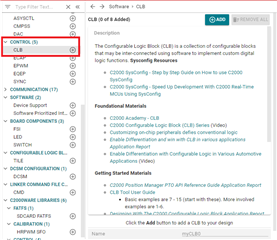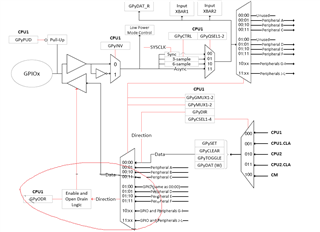Other Parts Discussed in Thread: SYSCONFIG, C2000WARE,
Hi Experts
I wanted to use CLB block to control the motor commutation taking the 3 hall inputs and few more inputs to Generate 6 outputs.
For that I am thinking to use 3 LUTs and 3 OUTLUTs from each tile(2 tiles)
Please help me how to map GPIO inputs to the CLB and how to take outputs of the CLB to GPIOs
Thanks & Regards
K.Aravind





